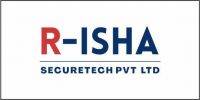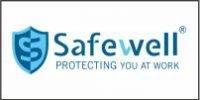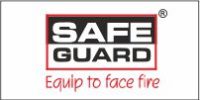 Ensuring safety at work is a shared responsibility among employers, supervisors, and employees. By following safety protocols, using proper protective equipment, and staying vigilant about workplace hazards, organizations can prevent accidents, reduce downtime, and enhance operational efficiency.
Ensuring safety at work is a shared responsibility among employers, supervisors, and employees. By following safety protocols, using proper protective equipment, and staying vigilant about workplace hazards, organizations can prevent accidents, reduce downtime, and enhance operational efficiency.
A strong safety culture not only protects workers but also improves productivity and compliance with occupational safety regulations.
Key Steps to Follow for Workplace Safety
- Follow Safety Rules & Guidelines
- Comply with workplace safety policies set by the organization and regulatory bodies.
- Read and understand safety manuals to ensure awareness of standard operating procedures (SOPs).
- Participate in safety training and drills to stay prepared for emergency situations.
- Encourage peer accountability, ensuring all workers follow safety protocols consistently.
- Use Personal Protective Equipment (PPE)

- Always wear the required PPE, including:
- Helmets (for head protection in construction, industrial work)
- Gloves (for hand protection against chemicals, burns, or cuts)
- Goggles or face shields (for eye protection in welding, cutting, and hazardous environments)
- Respirators or masks (for protection against dust, fumes, and airborne hazards)
- Ensure PPE is well-maintained, fits properly, and is replaced when damaged.
- Never bypass PPE requirements, even for short-duration tasks.
- Keep the Workplace Clean & Organized
- Maintain a clutter-free work environment to reduce the risk of slips, trips, and falls.
- Store tools, equipment, and materials properly after use to prevent obstruction and potential hazards.
- Ensure walkways and emergency exits remain clear at all times.
- Implement a 5S methodology (Sort, Set in order, Shine, Standardize, Sustain) to maintain workplace organization.
- Handle Equipment & Machinery Safely
- Use tools and machinery only if you are trained and authorized to operate them.
- Inspect equipment before use to ensure it is in proper working condition.
- Follow Lockout/Tagout (LOTO) procedures before performing maintenance to prevent accidental machine startup.
- Never remove or bypass safety guards on machines.
- Be Aware of Fire & Electrical Safety
- Know the location of fire extinguishers, emergency exits, and fire alarms.
- Avoid overloading electrical outlets and report damaged electrical wires immediately.
- Store flammable materials properly in designated storage areas.
- Ensure proper grounding of electrical equipment to prevent shocks and fires.
- Follow fire safety protocols and participate in regular fire drills.
- Practice Safe Lifting & Ergonomics
- Use proper lifting techniques:
- Bend at the knees, not the waist.
- Keep the load close to your body.
- Avoid twisting your body while lifting.
- Use mechanical lifting aids like forklifts, pallet jacks, or cranes for heavy loads.
- Ensure proper posture while sitting, standing, or performing repetitive tasks.
- Take short breaks to reduce muscle fatigue and avoid repetitive strain injuries.
- Stay Prepared for Emergencies
- Familiarize yourself with emergency contact numbers and first aid locations.
- Participate in fire drills, evacuation drills, and first-aid training sessions.
- Stay calm during emergencies and follow safety procedures to avoid panic.
- Ensure emergency response teams are trained and prepared for potential incidents.
- Report Unsafe Conditions Immediately
- Report hazards or unsafe practices to supervisors or safety officers immediately.
- Encourage a culture of safety reporting, ensuring that concerns are addressed proactively.
- Maintain an open communication system for employees to voice safety concerns without fear of retaliation.
- Regularly review safety policies and update protocols to address new workplace risks.
Conclusion
A proactive approach to workplace safety helps prevent accidents, ensures compliance with occupational safety regulations, and promotes a culture of safety excellence. Every worker plays a role in maintaining a secure, efficient, and hazard-free environment.
By implementing these safety protocols, organizations can achieve zero-incident workplaces while enhancing productivity and worker well-being.
Let’s commit to a “Safety First” mindset and work together to build a safer workplace!














































